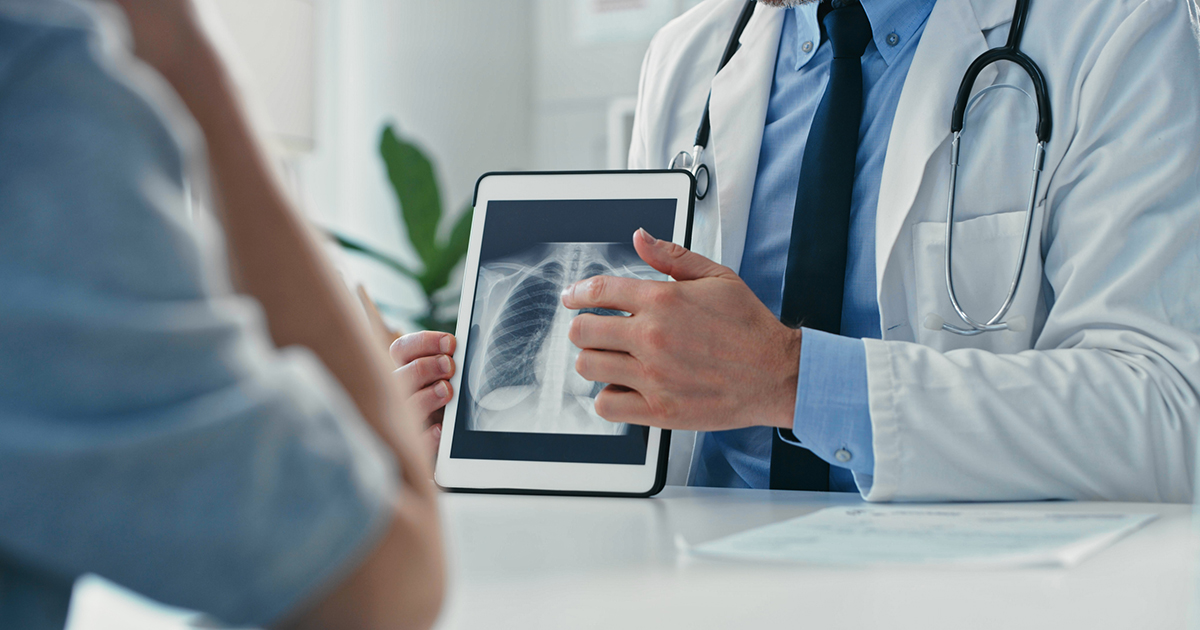Emerging technologies and treatments in Lung Health
Your lungs are essential to life — they bring in oxygen and remove carbon dioxide, keeping every cell in your body functioning properly. Healthy lungs support your energy, stamina, and ability to stay active, while poor lung function can limit daily activities, reduce quality of life, and increase the risk of serious illness.
Lung health is also closely connected to heart health and overall wellness, as impaired lung function can place extra strain on your cardiovascular system [1]. According to experts from The Respire Institute and the National Heart, Lung, and Blood Institute (NHLBI), many lung diseases develop slowly and may not cause noticeable symptoms at first. That’s why prevention, early detection, and ongoing care are key to maintaining strong, healthy lungs throughout life [2].

Emerging Technologies & Treatments in Lung Health
Lung care is advancing quickly thanks to innovative diagnostic tools and treatments:
Low-Dose CT (LDCT) Lung Cancer Screening Annual LDCT scans for high-risk individuals (e.g., adults 50–80 with a heavy smoking history) can detect early-stage lung cancer and reduce mortality [9].
Artificial Intelligence (AI) & Imaging Enhancements
AI is now being used to detect small lung nodules and patterns in CT scans more accurately and rapidly than traditional methods [10]. Combined with robotic-assisted bronchoscopy, AI helps clinicians diagnose lung cancer earlier and with fewer complications [11].
Breath-Based Screening Technology
Researchers are developing “electronic nose” systems that analyze breath for disease biomarkers, potentially allowing early detection of lung diseases in a non-invasive way [12].
Electromagnetic Navigation Bronchoscopy (ENB)
This advanced procedure uses electromagnetic guidance and 3D imaging to access hard-to-reach lung nodules safely and precisely [13].
Smartphone-Enabled Lung Sound Analysis
AI-powered digital stethoscopes and mobile apps can now record and analyze lung sounds, supporting remote monitoring and early warning of conditions like asthma and COPD [14].
These advancements are helping physicians detect disease earlier and improve treatment outcomes — a major step forward for preventive lung care.
What to Do If You Experience Lung-Related Symptoms
Seek medical care promptly if you experience any of the following:
• Persistent cough lasting more than 3–8 weeks
• Coughing up blood or rust-colored mucus
• Shortness of breath, wheezing, or chest tightness
• Recurrent respiratory infections (bronchitis, pneumonia)
• Chest pain when breathing or coughing
• Unexplained fatigue or drop in exercise tolerance
Document your symptoms and exposures (e.g., smoking history or workplace dust). Your provider may recommend chest imaging, pulmonary function tests, or referral to a lung specialist [18]. Early evaluation can prevent complications and improve outcomes.
How Often Should You Get Checked?
Routine checkups should always include discussion of your respiratory health — even if you feel fine.
• Annual wellness visits allow your provider to track symptoms, exposures, and lifestyle factors that affect your lungs [15].
• Pulmonary function tests (PFTs) may be recommended if you smoke, have asthma, COPD, or occupational exposure to dust or chemicals [16].
• Lung cancer screening is advised annually for adults aged 50–80 who have a 20-pack-year smoking history and currently smoke or quit within the past 15 years [9].
• If you already have lung disease or prior abnormal findings, follow-up intervals depend on the type and severity of the condition [17].
Your lungs are among your body’s hardest-working organs — and one of the easiest to take for granted. By quitting smoking, staying active, reducing exposure to irritants, and getting regular checkups, you can keep them strong for years to come.
©2025ProgressiveHealth
References
1. The Respire Institute. The Role of Lung Health in Heart Disease Prevention.
2. National Heart, Lung, and Blood Institute (NHLBI). Lung Health Basics.
3. American Lung Association. Smoking and Lung Disease.
4. NHLBI. Air Pollution and Lung Health.
5. Lung.org. Exercise and Lung Health.
6. Mayo Clinic. Nutrition and Respiratory Health.
7. CDC. Respiratory Infection Prevention Guidelines.
8. NHLBI. Lung Health and Early Detection.
9. LUNGevity Foundation. Lung Cancer Screening and Early Detection.
10. PMC (2024). AI-Based Imaging in Lung Cancer Diagnosis.
11. UC Davis Health (2024). Lung Cancer Breakthroughs: New Imaging Technologies.
12. Medical Xpress (2024). Early Screening Technology: Breath-Based Detection.
13. Cleveland Clinic. Electromagnetic Navigation Bronchoscopy Overview.
14. arXiv (2025). AI Models for Lung Sound Analysis via Smartphones.
15. Johns Hopkins Medicine. Routine Checkups and Lung Health.
16. American Thoracic Society. Guidelines for Pulmonary Function Testing.
17. LUNGevity. Follow-Up Scans After Lung Nodule Detection.
18. Mayo Clinic. When to See a Doctor for Respiratory Symptoms.

